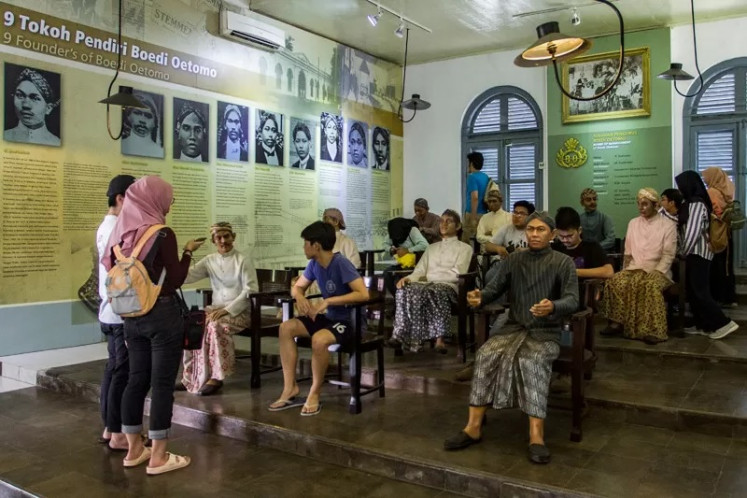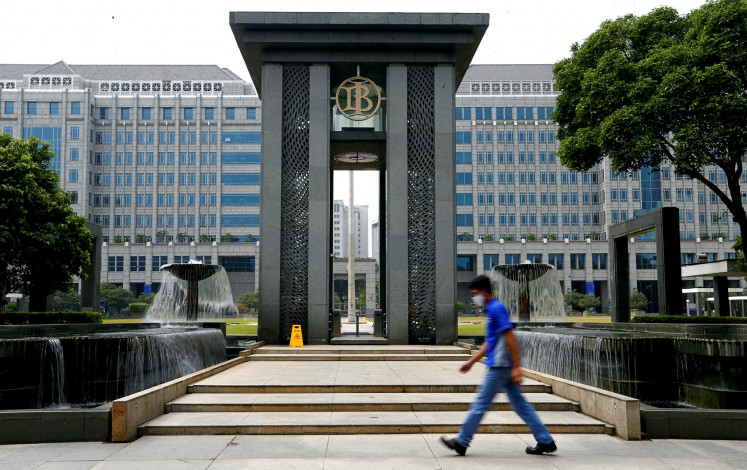Climate solution: How do we make sure our cities stay liveable ?
Recently, the Indonesian Meteorology, Climatology and Geophysics Agency (BMKG) predicted that heavy rains would hit Jakarta at the end of this year and would be likely to cause major flooding
Change text size
Gift Premium Articles
to Anyone

R
ecently, the Indonesian Meteorology, Climatology and Geophysics Agency (BMKG) predicted that heavy rains would hit Jakarta at the end of this year and would be likely to cause major flooding.
Flooding is not a new issue and Jakarta, as many other big cities in Indonesia including Bandung, Semarang and Surabaya, have unfortunately grown accustomed to it.
In 2007, flooding in Jakarta affected 80 subdistricts, causing traffic chaos and paralyzing the city.
More than 70,000 houses were inundated, with water levels ranging from 10 centimeters to 5 meters, 69 people were killed and an estimated 420,440 people were displaced. The Indonesian government estimated that losses amounted to Rp 4.1 trillion (US$450 million).
Last week, torrential rain in many areas of Jakarta flooded several underpasses in the eastern and southern parts of the city and was reported to have killed one man and inundated 12 subdistricts.
Rain — heavy or not — often leads to heavy traffic congestion during the rush hour in Jakarta and other cities. One study estimates that traffic jams cost Jakarta at least $1.4 billion a year in lost productivity.
In one of its reports, the BMKG projects there is an increasingly high risk and frequency of flooding and storm surge across Indonesia, as the global temperature increases.
Even though the flooding may not be as bad as that of 2007, the BMKG predicts that this rain, probably combined with a higher level of seawater, could still cause Jakarta to be submerged.
With an increase in the frequency of extreme weather and other climate-hydrological risks, the capacity of the capital city and other cities in Indonesia in dealing with this issue remains in question.
Climate change itself will merely intensify the pressure on these cities that have already been experiencing environmental degradation for decades.
Cities now cover less than 1 percent of the planet’s surface, but they are home to around 50 percent of the world’s population and growing rapidly. In Indonesia, according to the 2009 World Population Data Sheet, 40 to 50 percent of the country’s total population lives in urban areas.
The growth of cities and urban areas usually coincides with a rapid increase in a demand for land, energy, water and other natural resources, triggered by industrial activity, transportation infrastructure, office operations and housing for the new urban dwellers.
Particularly in developing countries, this growth translates into environmental challenges including lack of access to clean drinking water, urban water and air pollution, waste management, flooding and lack of green areas or open spaces.
This growth also contributes to the current global greenhouse gas emissions.
Policies, programs and actions need to be formulated now and implemented immediately to deal with the ongoing environmental challenges and adapt to future climate impacts.
In response to the challenge of flooding, last Friday, for instance, Jakarta’s governor promised that various efforts would be made to prevent any major flooding from inundating the capital city of Jakarta.
This was the latest in a string of promises he has already made and the people of Jakarta have waited long enough to see if this is actually going to be implemented.
With the current land-use management, Jakarta and other cities have little capacity to absorb a
high level of rainfall, while nearby rivers cannot discharge water into the sea since they are clogged with waste and because the sea may already be experiencing a higher volume of water.
Experts have previously pushed for a variety of solutions, including improved urban planning and infrastructure, such as improving water, wastewater and sewerage systems and services, maintaining the rest and creating new green open spaces, improving waste management and improving public transportation.
These solutions, if developed and implemented appropriately, not only can minimize the impact of environmental problems and climate change but are also an opportunity as a basis for achieving sustainable development.
City governments and the private sector firms that have influenced the cities’ economic growth, however, are not the only actors to be considered.
Another key factor when dealing with these environmental and climate challenges is involving the citizens of Jakarta, particularly to change their behavior in consuming energy and other products and managing their waste.
As reported in many studies and the media, the emerging middle classes in Indonesia’s large cities, especially in Jakarta, have altered consumption patterns and subsequently put additional pressure on natural resources, contributing to local water and air pollution and waste.
For example, a dramatic increase in the number of vehicles in Jakarta, often characterized by the ownership of multiple cars per family, has led to an increase in air pollution, associated with high levels of respiratory disease and other serious diseases.
The high level of consumption has generated a high level of waste, or around 6,500 tons per day for Jakarta. Experts calculate that about 20 percent of Jakarta’s daily solid waste ends up in the city’s rivers and canals, blocking their flow and reducing their ability to deal with floodwater by up to 50 percent.
There are organizations, nevertheless, currently working with students and showing the link between littering and natural disasters, that teaches them how to recycle waste materials and what to do in the event of a major flood.
This effort is laudable but needs to be supported further and scaled up.
Cities have always been a hot spot of innovation and technology and have, therefore, traditionally been the places where many of the solutions to the world’s problems are reached.
There are always choices — to have a liveable city or a doomed one — and now is the right time to make that choice.
The writer is a Ph.D. candidate at the Australian National University, the recipient of an Australian Leadership Award and Allison Sudradjat Award and adviser to WWF-Indonesia on climate and energy. He can be reached at fitrian.ardiansyah@anu.edu.au.









